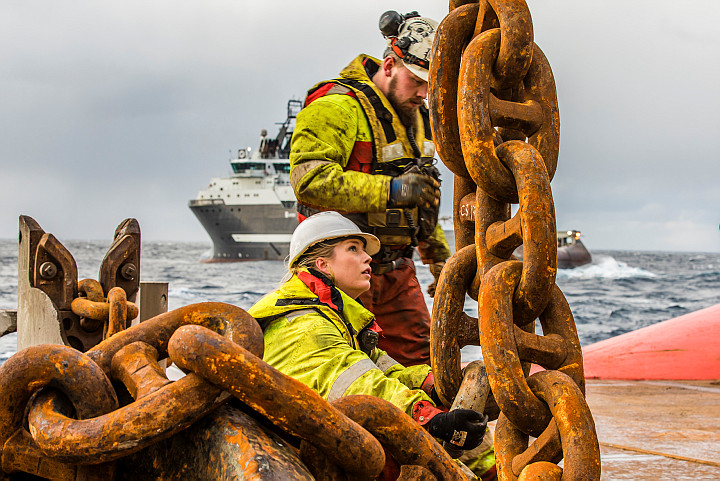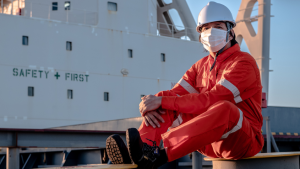Working on ships, whether it’s commercial, military, or private vessels, is a career that offers both unique challenges and rewarding opportunities. Seafarers navigate the world’s oceans, ensuring the smooth transport of goods, passengers, or even naval operations. Life at sea can be thrilling, but it also demands physical endurance, mental resilience, and adaptability to an often isolated and unpredictable environment. This article explores the pros and cons of working as a seafarer, delves into the lifestyle, and examines the international support systems in place for those who choose this path.

Pros of Being a Seafarer
1. Global Travel and Adventure
One of the most appealing aspects of working on ships is the opportunity to travel the world. Seafarers visit various ports across continents, experiencing diverse cultures and environments. This global exposure can be incredibly fulfilling for those with a passion for adventure.
2. Financial Benefits
Seafaring jobs often come with competitive salaries, tax-free income (depending on your country of residence), and a range of benefits such as food, accommodation, and health insurance. Due to the unique nature of the work and long contracts, seafarers often save a significant portion of their earnings, helping them build a solid financial foundation.
3. Skill Development and Career Growth
Working at sea requires technical expertise, teamwork, and problem-solving skills, particularly in high-pressure situations. These experiences help develop valuable skills that are transferable to a wide range of industries. Many seafarers progress from entry-level positions to higher ranks, such as officers or ship captains, with additional certifications and experience.
4. Long Breaks Between Contracts
After a contract, seafarers typically enjoy extended periods of time off, which allows for recuperation and time spent with family. This work schedule can be attractive for those who prefer intensive work periods followed by long breaks.
Cons of Being a Seafarer
1. Prolonged Time Away from Family
One of the biggest challenges is being away from loved ones for months at a time. Long stretches of isolation at sea can lead to feelings of loneliness and homesickness, and maintaining personal relationships can be difficult.
2. Physical and Mental Demands
Life at sea can be physically demanding, with long working hours, harsh weather conditions, and limited personal space. The work often requires strong physical fitness and stamina. Additionally, the isolation and repetitive nature of the job can lead to mental health issues like anxiety, stress, or depression.
3. Risk and Unpredictability
Seafaring comes with inherent risks. The unpredictability of the weather, accidents on board, and piracy in certain regions all pose significant dangers. Seafarers need to be trained in safety protocols, and their ability to remain calm and take quick action is crucial.
4. Limited Social Life
Social interaction at sea is restricted to fellow crew members, and for those who thrive on dynamic social lives, the isolation can be challenging. The limited contact with friends and family during long voyages exacerbates this issue.
Credit: D.Marmolejo
Lifestyle as a Seafarer
Life Onboard: Daily life on a ship revolves around work shifts and maintaining the smooth operation of the vessel. Crews live in close quarters, and the living conditions vary depending on the type of ship and rank. Meals are communal, and recreational facilities are often limited, but camaraderie among crew members is an essential part of the lifestyle.
Work Schedule and Rotation: Work hours are typically divided into shifts, known as “watches,” which can be demanding, especially on cargo or container ships. Depending on the contract, seafarers might work for several months at sea before having time off. This rotational schedule is a significant adjustment for those coming from regular, land-based jobs.
Adapting to Different Cultures: Since ships often have multinational crews, seafarers must learn to live and work with people from diverse backgrounds. This requires open-mindedness and effective communication, but it can also foster lifelong friendships and cultural exchange.
International Support and Regulation
1. International Maritime Organization (IMO)
The IMO sets standards for the safety, security, and environmental performance of international shipping. It helps ensure seafarers have safe working conditions and that vessels operate with the proper regulations in place. The IMO also promotes fair treatment of seafarers, ensuring they have access to legal protection and human rights support.
2. Seafarers’ Rights and Welfare Organizations
Various organizations exist to support the well-being of seafarers. The International Transport Workers’ Federation (ITF) works to ensure fair wages, reasonable working hours, and proper treatment. Seafarer welfare organizations, such as the Sailors’ Society and Mission to Seafarers, provide emotional, financial, and legal support, especially during emergencies or times of distress.
3. Access to Communication and Connectivity
With advances in satellite technology, more ships now offer internet access, allowing seafarers to stay connected with their families and the outside world. This has significantly improved the quality of life at sea, although connectivity can still be limited or costly depending on the region.
Opportunities for Growth in the Industry
Growing Demand for Skilled Workers : With the rise in global trade, there is a growing demand for skilled seafarers to crew the increasing number of commercial ships. This means that those entering the industry can look forward to a wide range of job opportunities.
Environmental and Technological Advancements: The shipping industry is evolving with a focus on sustainability and automation. Innovations such as greener shipping technologies, autonomous vessels, and digital systems open up new career pathways for seafarers to gain specialized knowledge in these areas.
Personal Development and Adventure: The combination of travel, skills development, and working in diverse environments allows seafarers to grow both personally and professionally. The job demands adaptability and resilience, which often results in greater self-awareness and confidence.
Working on ships as a seafarer presents a unique lifestyle that comes with a set of distinct challenges, such as long periods away from home and physical demands, but it also offers considerable rewards. From global travel and financial benefits to personal growth and professional development, seafaring can be a fulfilling career. The industry is supported by international regulations and welfare organizations that help ensure seafarers’ rights and well-being. For those drawn to adventure and skilled labor, life at sea can be a rich and dynamic experience, filled with both challenges and opportunities.





I could not resist commenting. Perfectly written!